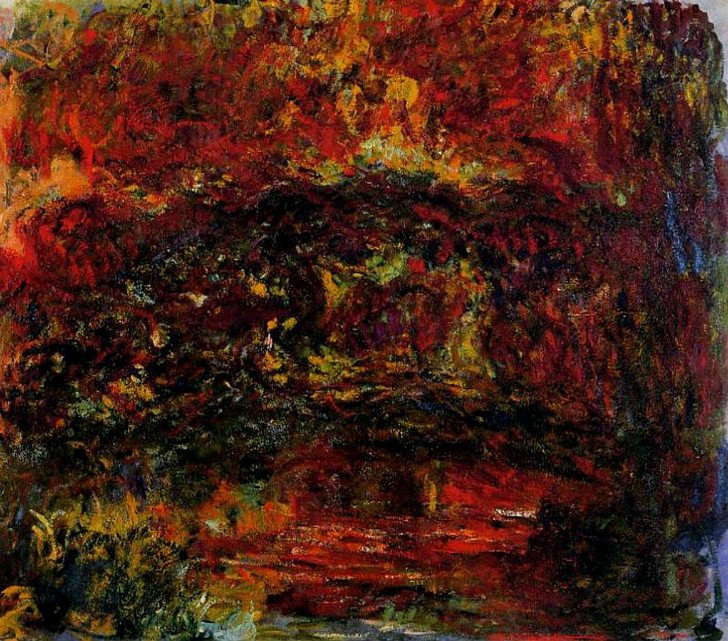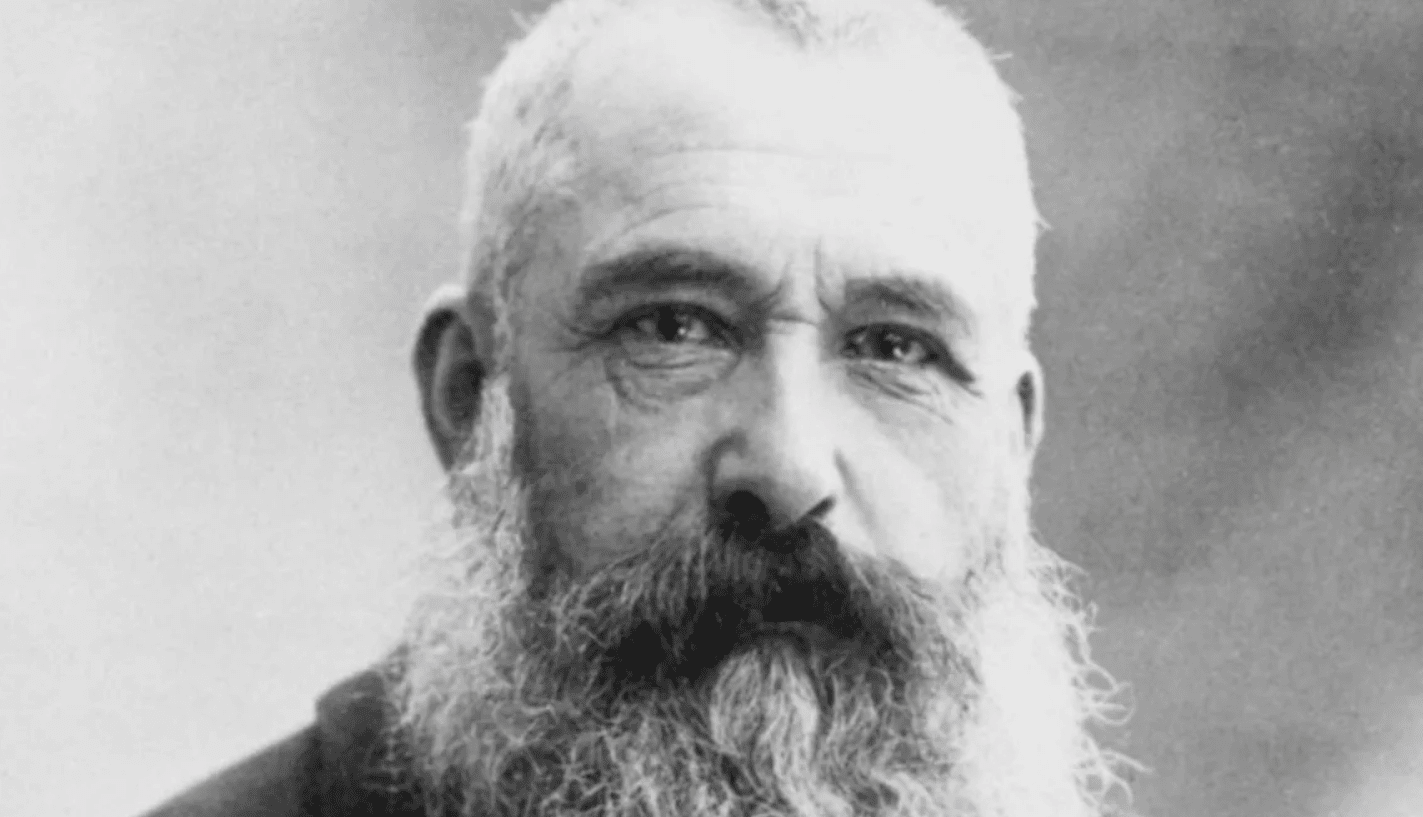We have compiled sections from the life of the world-famous French impressionist painter Claude Monet and his most famous paintings
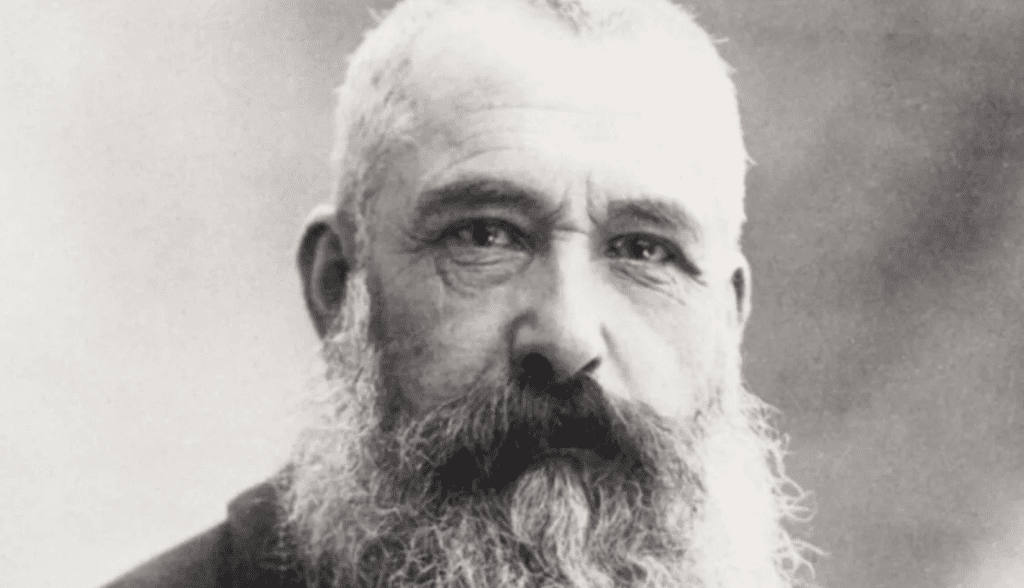
Born in Paris in 1840, Claude Oscar Monet was the son of a grocer. In 1845, his family moved to Le Havre, where he studied drawing as well as school education. He was interested in caricature when he was very young, but after 1858 he learned to love painting outdoors under the supervision of his true master, landscape painter Eugéne Boudin. In 1859 he went to Paris to study painting. Despite all opposing suggestions, Monet continued his studies independently both in Charles Jacques’ studio and at the Académie Suisse, where he knew Pissarro. Upon his return to Paris in 1862, he met Frédérick Bazille, Pierre-Auguste Renoir and Alfred Sisley, with whom he would remain friends throughout his life.
- Jean Baudrillard, One of the Greatest Philosophers of the Postmodern Age: Life, works, ideas
- Why Did Grigori Perelman Refuse to Accept the Awards?
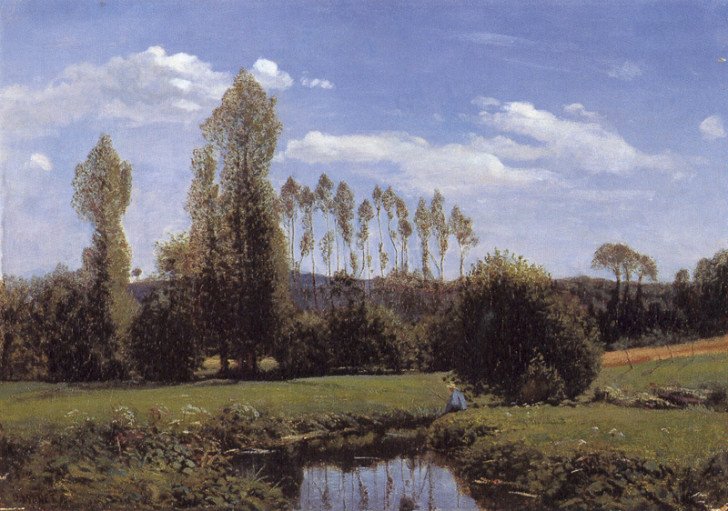
These were difficult years for Monet. His family, who did not approve of his independence and rebellious character, cut off all kinds of financial aid, and he was in constant arguments with his family. The only help he received in those years came from his artist friends, especially Gustave Courbet and Bazille. In 1866, he painted a full-length portrait of his girlfriend Camille Doncieux and received good reviews. His family, who did not approve of his relationship with Camille, stopped giving him money again. Around this time, Camille gave birth to Monet’s first child.
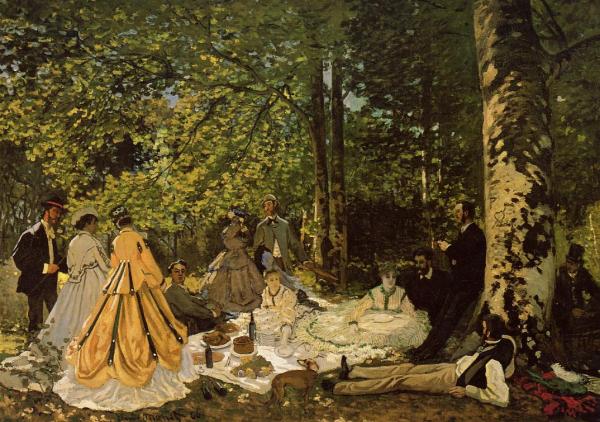
Picnic was inspired by his friend Édouard Manet’s scandalous Luncheon in the Country in 1863. In these years, Monet, like Manet, was in favor of depicting scenes from modern life instead of fictional, historical, romantic and dreamlike subjects. Picnic is a painting that shows that Monet continued his realistic understanding.
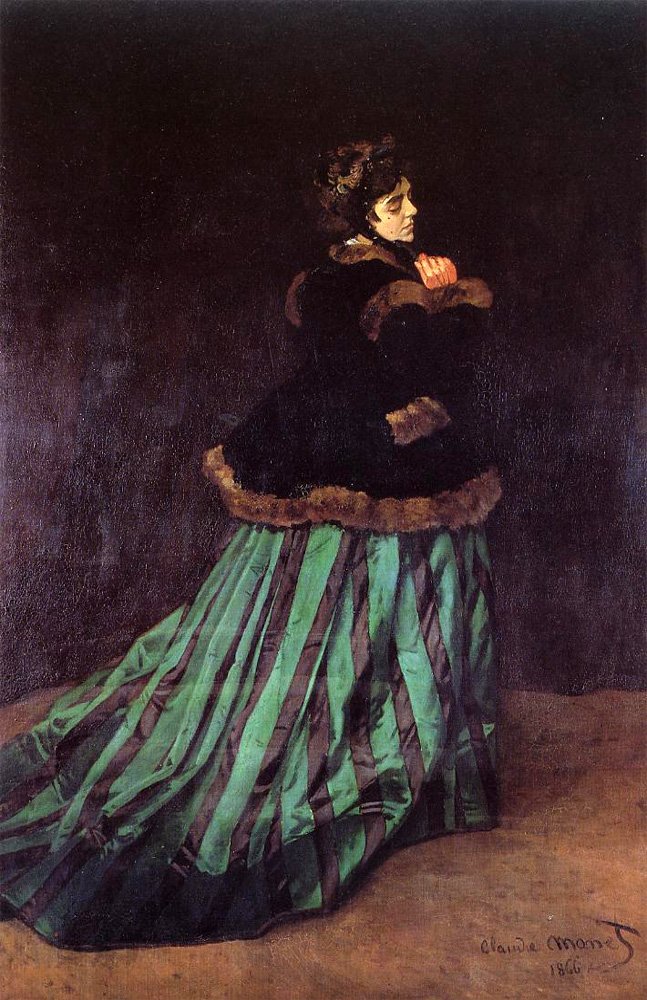
The yellow light falling on his wife Camille’s face was a harbinger of early death, while the skirt sweeping the floor was, on the contrary, a symbol of life and movement. The painter would paint Camille even when death closed his eyes, reflecting the projection of pain on his wife’s face shaped by blue and white brushstrokes.
Monet painted his aunt’s garden. The woman in the garden is Jeanne-Marguerite Lecadre, his cousin. Monet’s mother dies in 1857. The painter moved to Lecadre’s house. Seeing Monet’s talent as a painter, the cousin encouraged him in this direction.
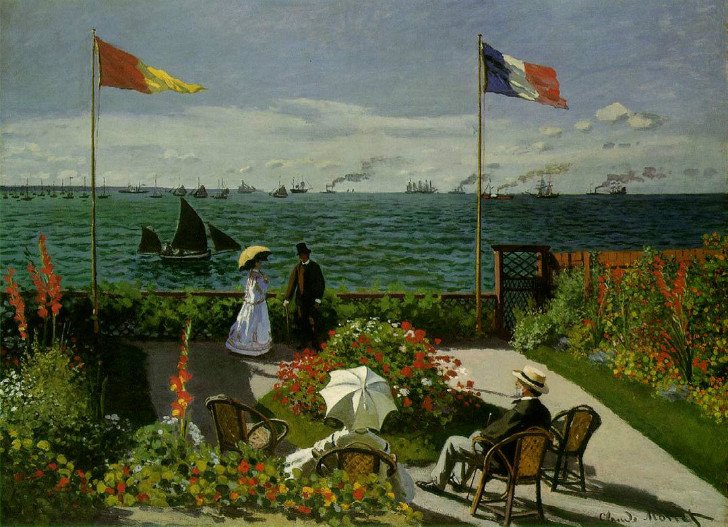
Monet painted his aunt’s garden. The woman in the garden is Jeanne-Marguerite Lecadre, his cousin. Monet’s mother dies in 1857. The painter moved to Lecadre’s house. Seeing Monet’s talent as a painter, the cousin encouraged him in this direction.

Monet, a painter who often had financial problems, received a substantial fee from one of his clients in the summer of 1868. For the first time in his life, he was able to buy his family a decent home. It is his family posing for him in this painting. Monet did not paint himself, but he probably watched this scene happily. The space feels intimate and cozy. We see a maid in the background. Monet painted this painting on a particularly large scale. For example, we see that details that are not of great importance, such as the food on the table, are emphasized. By projecting a bright light on his son and mother, and at the same time placing his son in the very corner of the painting, he emphasizes that his son is the emotional focus.
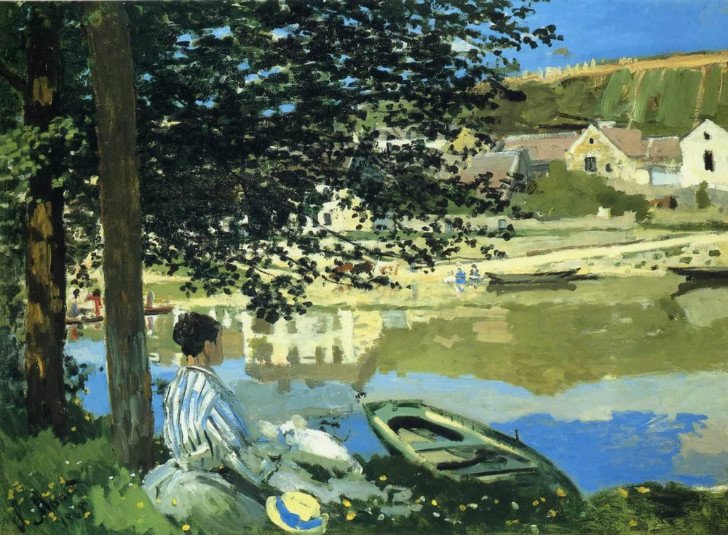
In this painting, we see his transition to the impressionist style. In the work, it is Camille sitting across the Seine River. Monet summarizes his close relationship with the Seine River as follows: “The Seine! I have painted it all my life, from Paris to the sea, in every season, in every moment. Manet used to say, ‘Oh, leave that river to us for a while!’ I never tired of drawing and painting it for a moment. The Seine was always a novelty for me, nature itself. I spent hot summers on its banks, where my eyes burned from the reflection of the water, and I lived through relentless winters. I remember working on the ice in January 1880. The water was frozen. I had to drill through the ice to set up my table.”

In 1870 he married Camille and they moved to London to escape the Franco-Prussian war. After more than a year, they returned to Paris and rented a small house. Although he was no longer as poor as in his youth and was able to spend his time painting, he still lived on the help of some of his friends. In 1870, Monet went to London with Pissarro. During this visit, he made his work called Westminster Bridge.
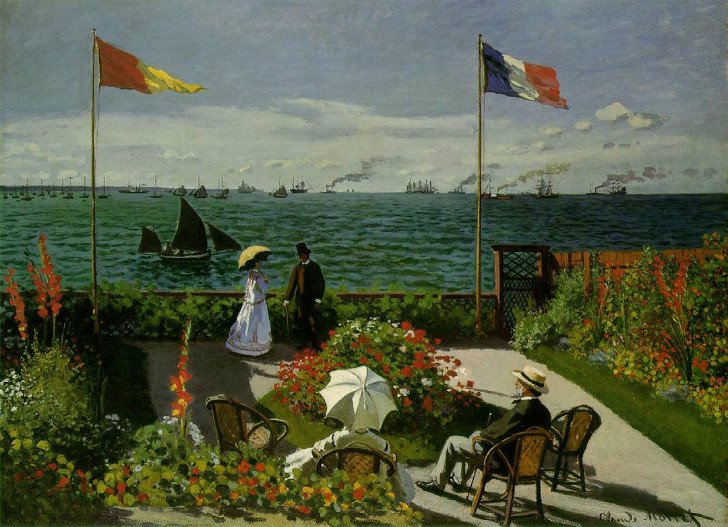
He stays in Argenteuil between 1872 and 1878. This is a very productive period for Monet. In 1874, 3 painters, Monet, Degas and Morisot, formed a group and participated in an exhibition. This group was called impressionists. This name was inspired by Monet’s painting called Solstice. While the term “impressionist” was initially used only for the painters who participated in this exhibition, it gradually became a general concept expressing the new view of art put forward by those who opened this exhibition. Impressionism is an art based on eye sensitivity. It reflects the objects around us as an impression to us with an instant image by stripping them of their concepts.

This painting, Sunrise (Impression), shows the harbor of La Havre at sunrise. What Monet wants to describe is the blending of the sun’s rays on the surface of the water at dawn and the fluctuations of light that occur on the sky and sea surfaces at a certain moment. In fact, Monet clearly stated the character of the painting with the title he gave to it. Monet’s free brush strokes, the sketchy appearance and sense of spontaneity that resulted from transferring his instantaneous perceptions to the canvas were reflected in the work as an impressive morning view. Monet’s style was a revolution for that time.
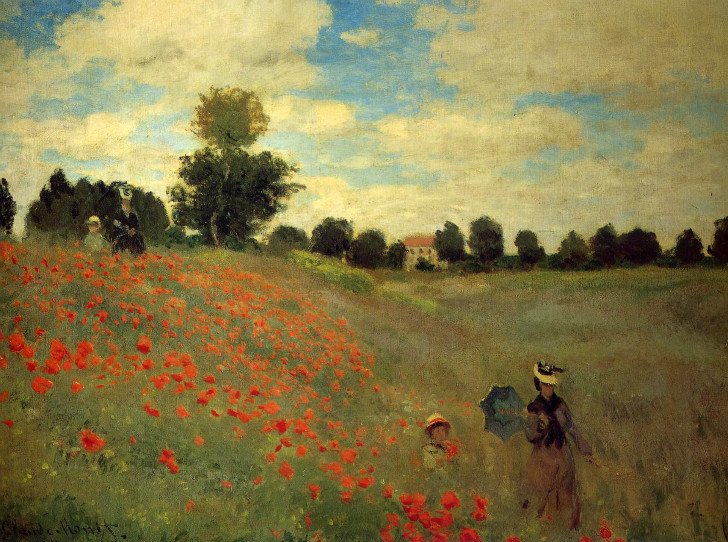
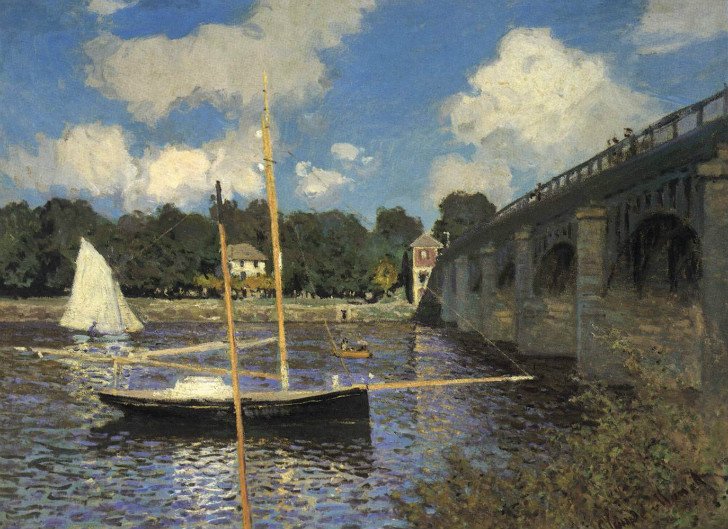
Argenteuil, where he lived for 8 years, has an important place in Monet’s works. When passing through this town, the river bed widens, the bridges are longer, the water is shallower. And the sky is as deep as it can get. Undoubtedly, the painter was in love with this depth.

We see Camille Monet dressed in a long red kimono and wearing a yellow wig to emphasize her western identity. While this painting, which is quite imposing in size, once again proves Monet’s mastery in the use of color, Camille, who we see on a tatami mat, waving her elegant fan, shades the colors and patterns of the different fans hanging on the wall behind her with the bright red kimono and the sword-wielding figure on it.
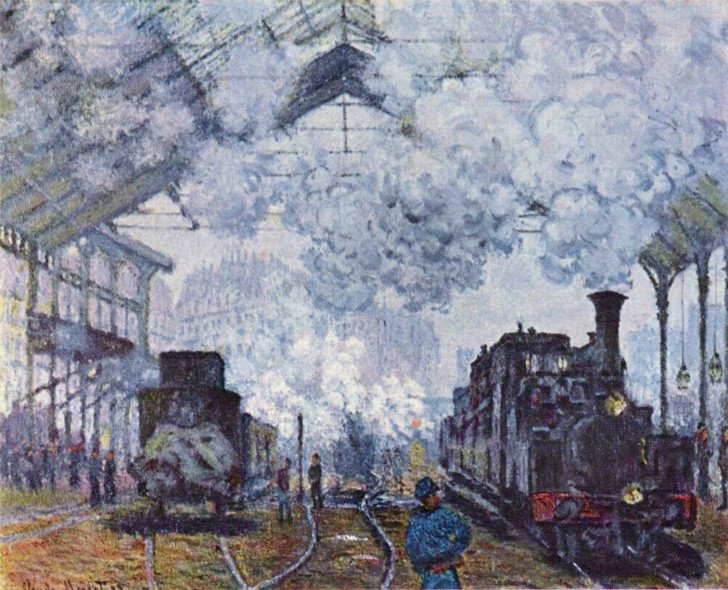
When Claude Monet paints the Saint-Lazare Station, which he observes from his house right next to the station, the locomotive and wagons in the foreground are obscured by the steam that covers them. The passengers seem to have disappeared in this fog and uncertainty. In the background, the huge buildings of the European Quarter, which look as if they are about to collapse on the glass roof, have melted into the smoke with their white facades. Monet was after the light that changes throughout the day, not reality. And with this method, he made 12 paintings of the Saint-Lazare Station.
Monet lived in Vétheuil from early 1878 until 1881. He continued to paint paintings, especially of the banks of the Seine, trying to depict the changing reflections of light on water. He also depicted the effect of light on snow in many of his paintings. The death of Camille, who passed away in 1879, dragged Monet into an irregular life. In 1890, he married Alice Hoschede, the widow of a collector, after finally buying the house he lived in.

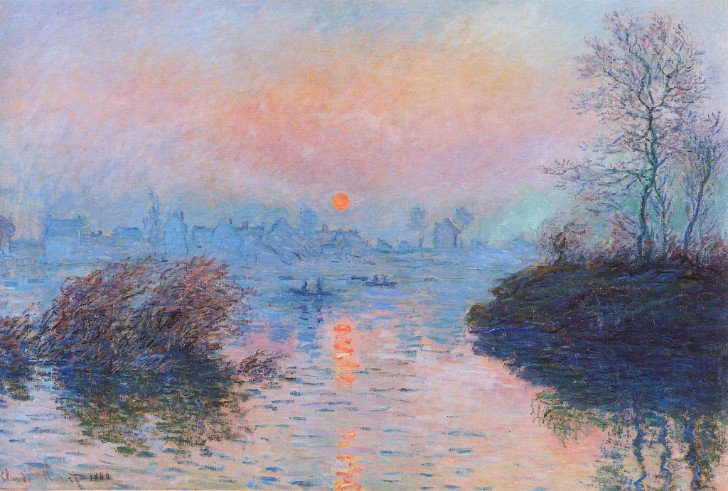
Lavacourt is a place on the banks of the Seine River in Paris where Monet stayed in September 1878. The winter of 1879 was particularly harsh. Paris and its surroundings were paralyzed by snow, rendering all means of transportation unusable. Despite the cold, in the first months of 1880 Monet painted around 20 paintings, observing the slow thawing of the ice on the Seine.
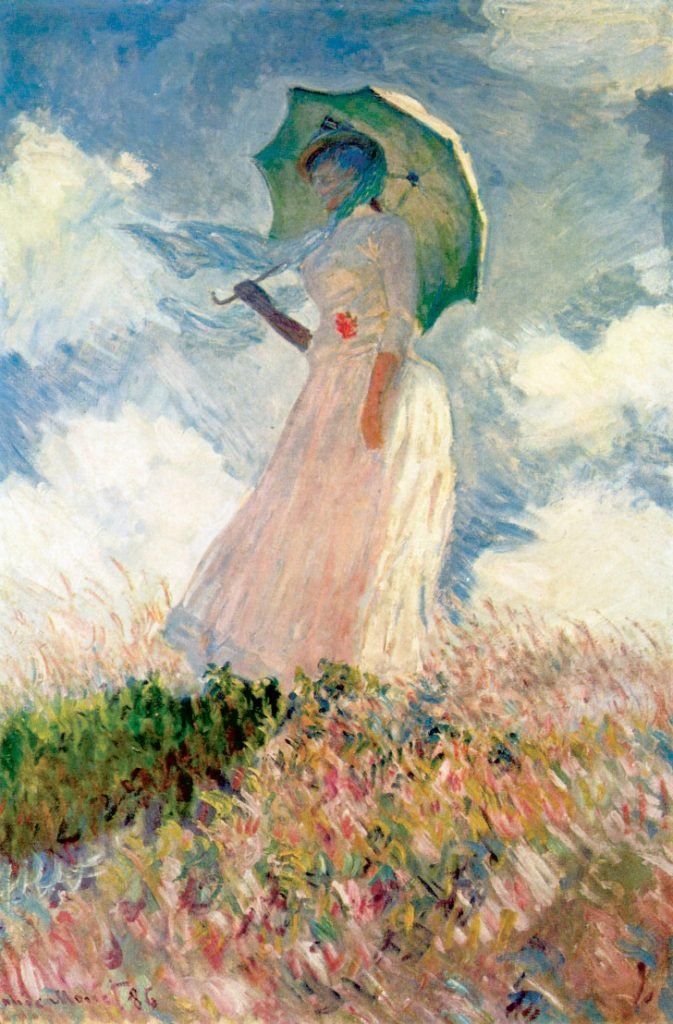
The model in the painting, also known as Woman with Umbrella, is Monet’s second wife Alice’s daughter Suzanne from his first marriage. In later years, Monet objected to the marriage of American painter Theodore Earl Butler and his stepdaughter Suzanne Hoschede. But he softened after learning about the wealth of the Butler family. He immortalized their wedding in his painting.
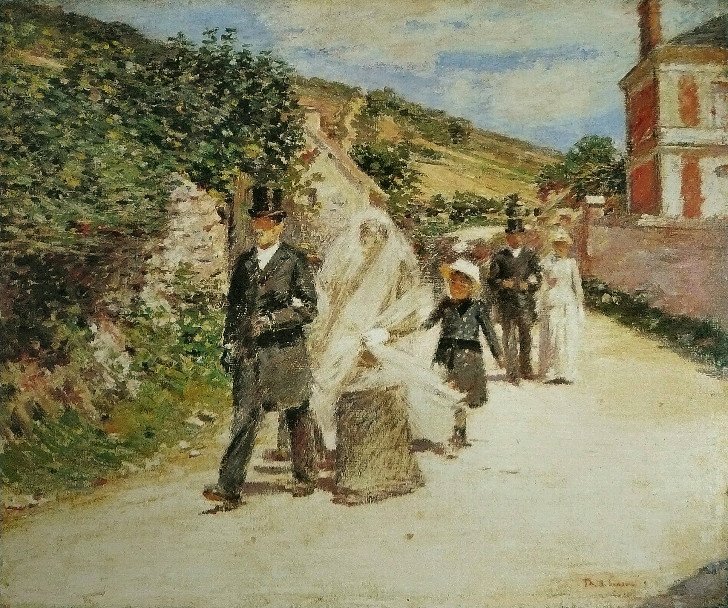

Monet’s division of the painting into yellow and blue areas makes the trees appear yellowish against the backdrop of a blue sky, even though they are green, due to the effect of the phenomenon of contrast. The shadow of the tree falling on the yellow field is perceived as purplish blue. There are small reds in the background to contrast the green color of the trees.
At the height of his fame at the age of 50, Claude Monet had a country house built in Giverny, 80 kilometers from Paris. He decorated his eight-acre garden with an artificial lake and flowers. In this garden, Monet ordered willows, lilies and water lilies from Japan and turned it into a garden of paradise. For 36 years, he painted many of his paintings here. The house, which was donated to the French Academy after his death, has been open to visitors since 1980.
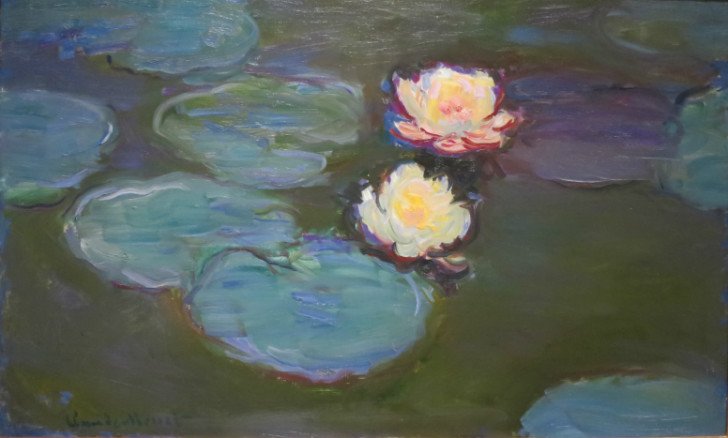
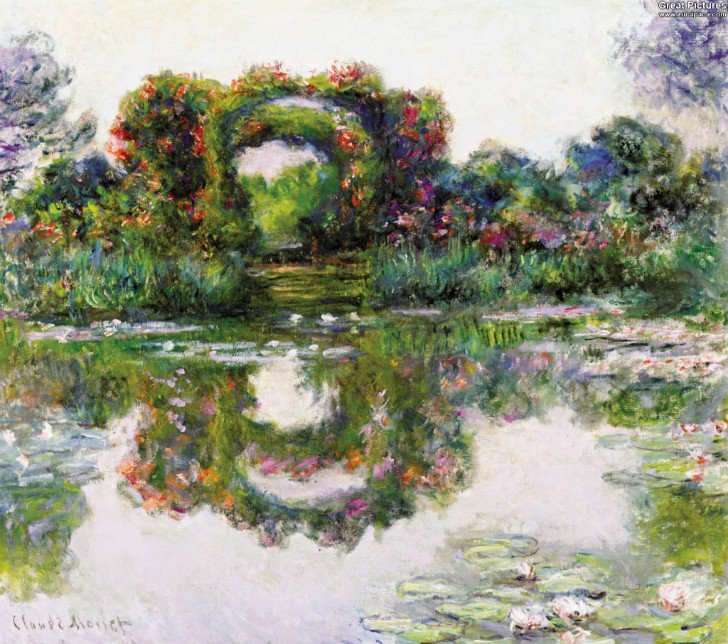
Monet underwent surgery twice for cataracts in 1923. We see that the paintings he made during his cataracts are generally in red tones. It is a condition caused by his illness. He died in 1926 at the age of 86 in Giverny.
